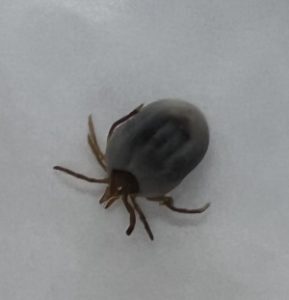Deadly paralysis ticks out in force
By John Morgan | Dated November 11, 2022

The paralysis tick may only be a few millimetres in size but can be deadly! Watch out for them this tick season
As the weather warms up, more and more paralysis ticks are out and about. Paralysis ticks can be deadly to our pets, even with intense treatment and supportive care. Luckily there are preventative medications available that kill ticks before they cause paralysis.
The paralysis tick (Ixodes holocyclus) is unique to the eastern coast of Australia. They attach to animals and slowly inject a neurotoxin that causes paralysis. They are present all year round in Sydney’s north shore but are much more common in the warmer months of spring and summer.
Signs of tick paralysis are variable and may include:
- change of voice (bark or meow)
- difficulty blinking
- difficulty swallowing
- regurgitation or vomiting
- weakness
- paralysis
- difficulty breathing
Without treatment, these signs get worse until they eventually become fatal. If you see any of these signs in your pet, please seek immediate veterinary attention.
There are lots products designed to protect your pet from ticks. Some treatments are more effective than others, so we have included some recommendation for dogs and cats below.
For dogs, oral preventative are preferred over topical treatments. We generally recommend either treatment every 3 months with Bravecto or every month with Nexgard or Simparica. You may also use a Seresto collar alongside these oral treatments if you live in a high risk area or frequently take your dog bushwalking.
In cats, we recommend a topical spot-on treatment with Bravecto (every 3 months) or Revolution PLUS (monthly). If you have more than one cat, it is usually a good idea to separate them to avoid the cats grooming the treatments off one another. We also recommend treating indoor-only cats as ticks may be carried into the house by other pets or even on your clothing.
While these products are highly effective, no treatment offers 100% protection. We recommend daily tick checks for your pet. To do this, walk your fingers through your pet’s coat feeling for any small hard lumps on your pet’s skin. Most ticks are found on the face, head and neck, so focus your search on these areas.
As always, we are here to help, if you have any concerns about paralysis ticks and your pet, please contact us. We would love to help keep your pet safe this tick season!
